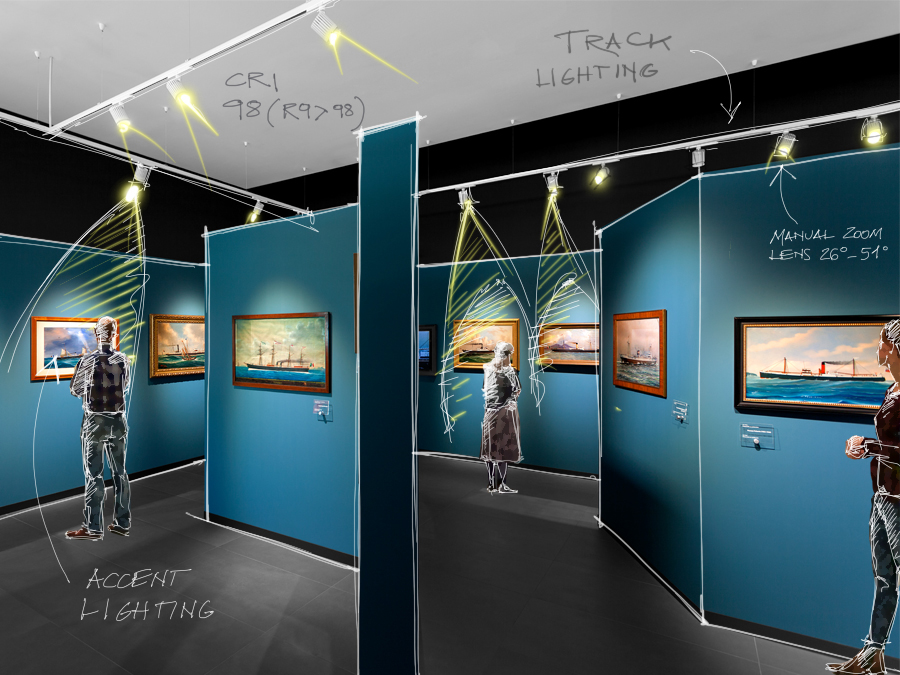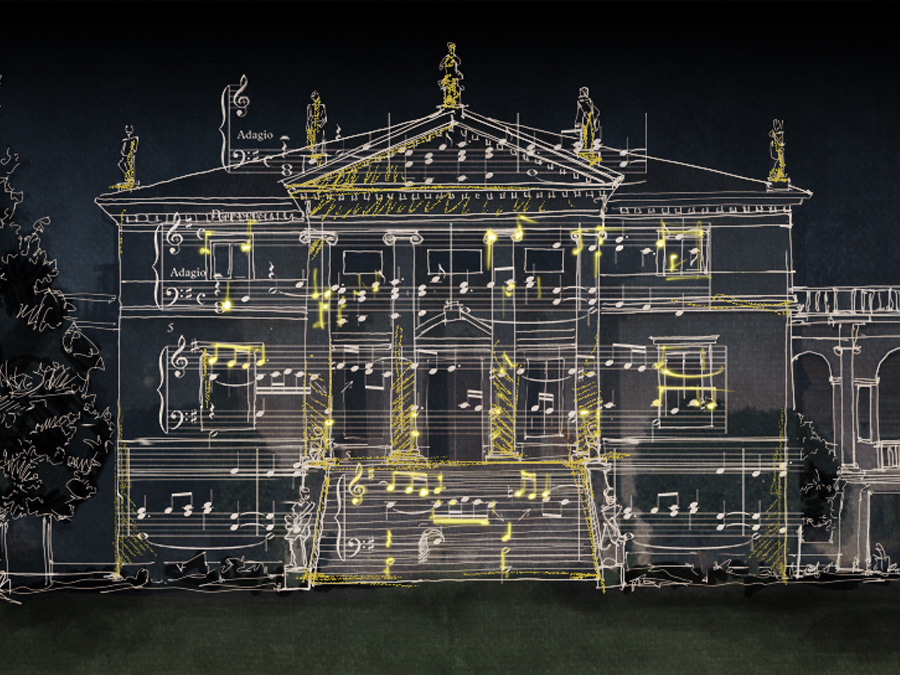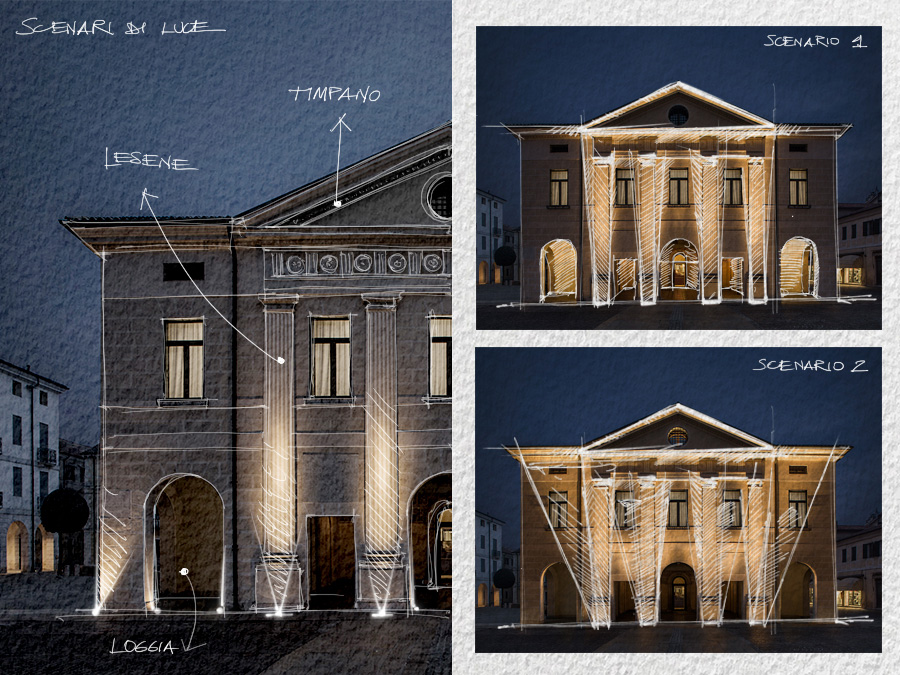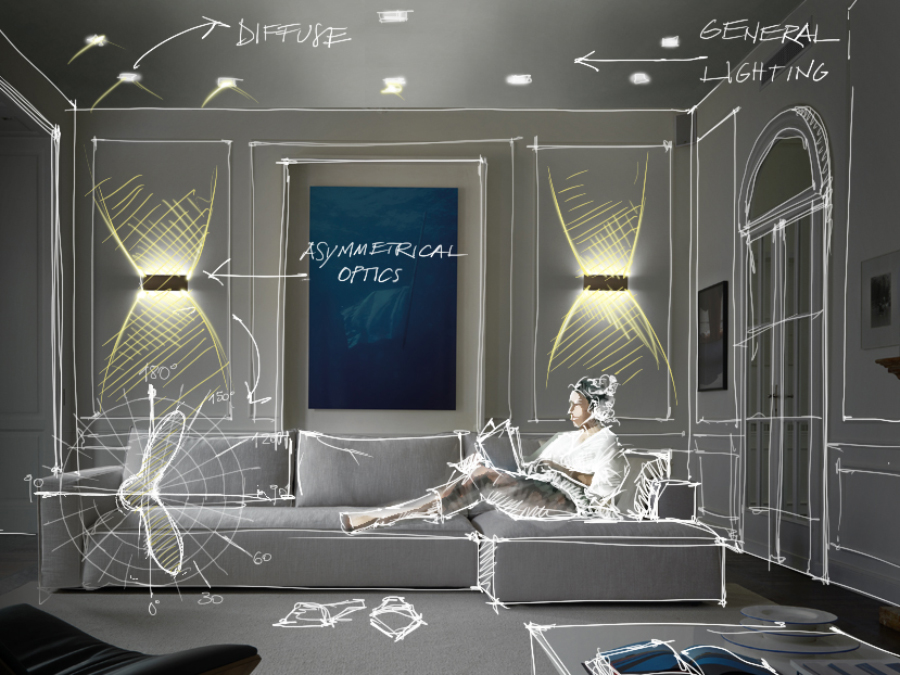Museums, exhibition halls, galleries and displays: lighting art venues is an art in itself. A complex art that requires not only lighting knowledge but also a sensitivity to the venue, the context and the exhibition theme.
Our focus here is on the fundamental role of light in the visitor’s enjoyment of art. We’ll explore together the aspects to be considered when first approaching museum lighting.
Lighting art is a work in progress
The art world is vast, varied and ever-changing. Let’s start there, with the ever-changing nature of exhibitions. Exhibitions follow one another in the same setting and, as they change, the type of works on display varies, their size changes, or the quantity, or where they are located.
The lighting requirements change accordingly: we may need to move the lighting fixtures or use varying numbers of lamps depending on the size of the collection on display, or we may question whether the light output is still appropriate for the new works.
Track-mounted projectors offer the advantage of a flexible installation that can be changed without the need for an electrician. Depending on the exhibition, we may use all or only some of the fixtures, moving them to where they are needed and directing their output to best enhance the work.
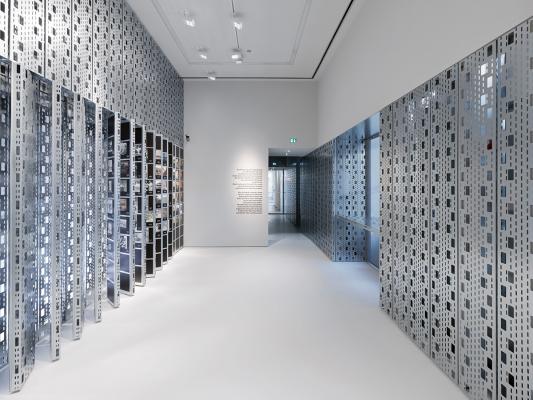
Siri Track 2.0, 3000K, 16W, white Go to the project and credits 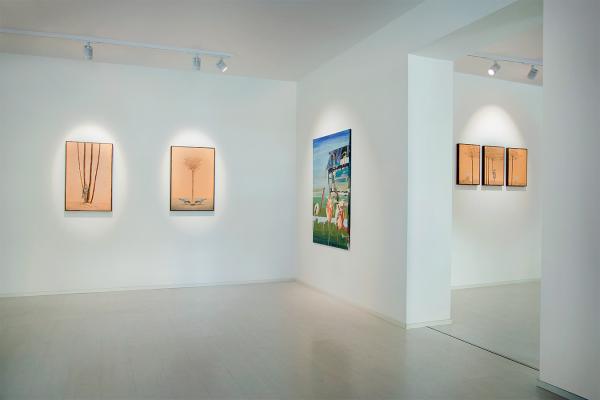
Zab Track 2.0, 3000K, 23W, white, APART spaziocritico, Vicenza, Italy, courtesy of Sharon Di Carlo Find out more about the product
So, we’ve found a solution for changing numbers and locations of exhibit. But, if it is the shape and size of the objects that change, how do we rethink the lighting?
Projectors with a manual zoom lens make it possible to adjust the angle of the output and adapt it to the object on display. Paintings of different sizes can all be lit in the most appropriate manner with a single fixture, as envisaged by ARCHH Associati for the Coeclerici Gallery in Genoa’s Galata Maritime Museum.
The adjustment range of the projectors’ optics goes from 26° up to 51°.
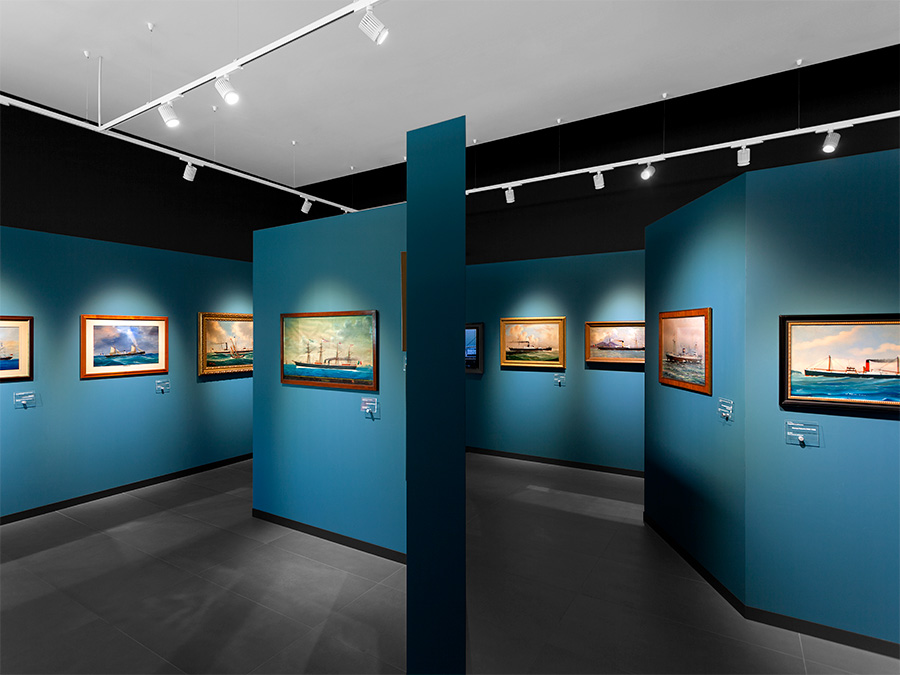
Zab Track 2.0, customized version with 3500K LED colour, 23W, white Go to the project and credits
In addition to widening and narrowing the beam, we can also change its shape, for example from rotationally symmetrical to elliptical optics, with the help of optical filters. Siri Track 2.0 contains five different filters inside the optical compartment, so that you can change the shape of its light output freely, without the need for specialised technicians.
Now let’s imagine that we have to replace the above paintings with sculptures, i.e. three-dimensional objects.
How sculptural works are perceived can vary enormously, depending on the number and positioning of the light sources illuminating them. Playing with these variables enables different effects to be obtained, in line with the theme of the exhibition.
🗿 In the first image, for instance, the statue is flattened by uniform, almost full-frontal lighting that flattens its three-dimensionality.
🗿 In the second image, on the other hand, a number of different lights, directed from above, create balanced shadows that are able to “sculpt” the form in its entirety.
The possibilities are endless, and it all depends on what we want to highlight in our work.
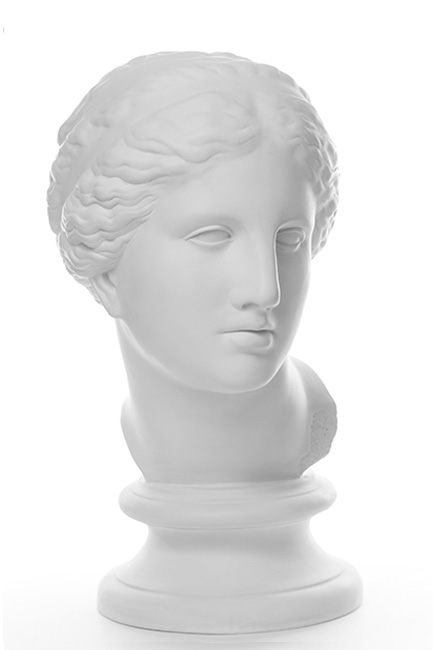
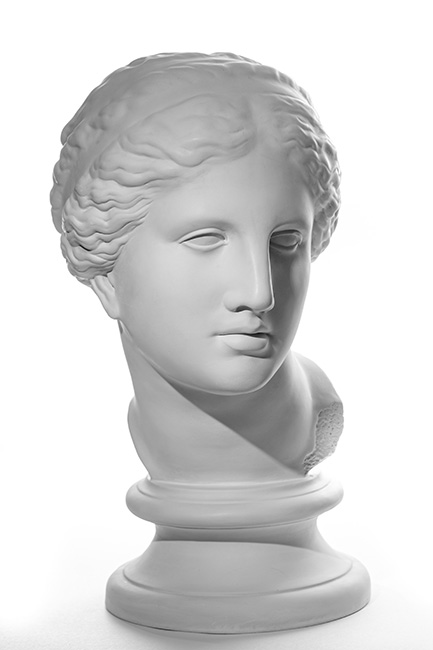
Light and its surroundings
When exhibitions are set up in buildings of great historical and artistic value, the scope for lighting is limited by the fact that holes cannot be made in the walls.
To overcome this, the solution adopted by the lighting designers of Lucearchitettura for the archaeological site of the Hypogeum of Santa Maria in Stelle was a pedestal, a self-supporting structure that houses the projectors without damaging the fragile frescoed walls and ceiling.
An interesting detail: the pedestal, designed specifically for the project, has a rectangular profile, perforated in the middle, with geometric proportions similar to those of the frescoed pilaster at the back. This inspired idea ensures the structure achieves the greatest possible stylistic integration into the setting with the least possible visual impact.
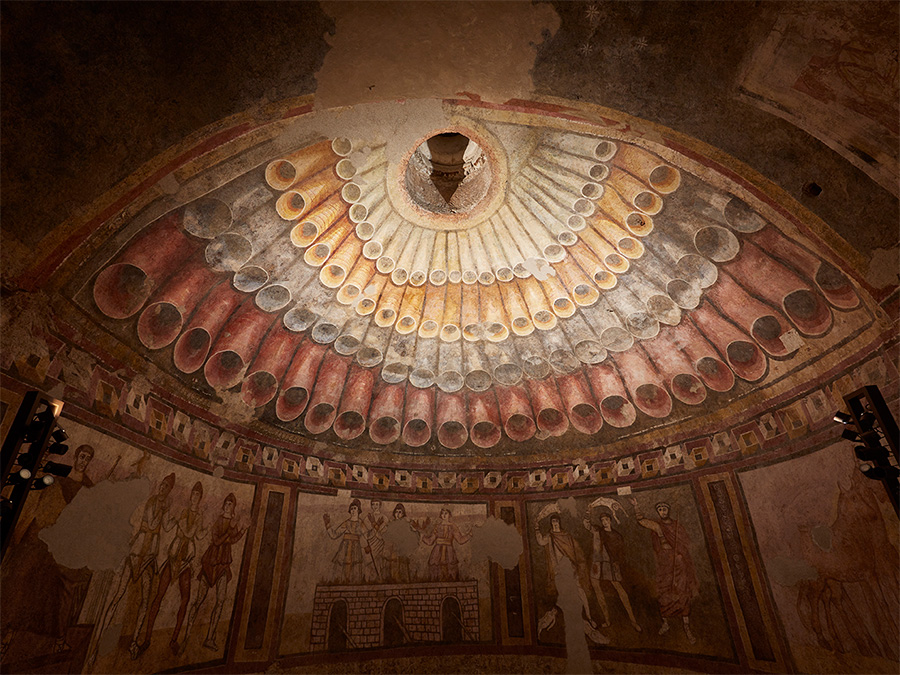
Ginko, 3000K-4000K, 11°-17°-34°-45°-68°, cor-ten, standard snoot, pedestals designed by Lucearchitettura Go to the project and credits
Moving away from the peculiarities of historic buildings and archaeological sites, let’s now consider ambient lighting.
In the visitor experience conceived by the architects of Estudio Herreros in the Munch Museum in Oslo, consideration was given not only to the exhibition rooms but also to the transition areas between one room and the next. These allow visitors to linger and observe the view of the Norwegian capital from their large windows.
In these spaces, which the architects themselves term ‘dynamic’, linear profiles, fixed to the ceilings, cast a grazing light on the walls, making the volumes seem larger.
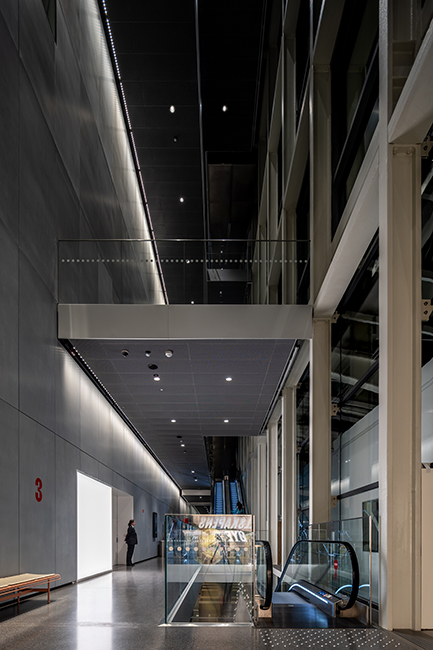
Their atmospheric effect is also visible from the outside, demonstrating that museum lighting design is not limited to accent lighting for the works of art but embraces the museum’s entire complex architectural space.
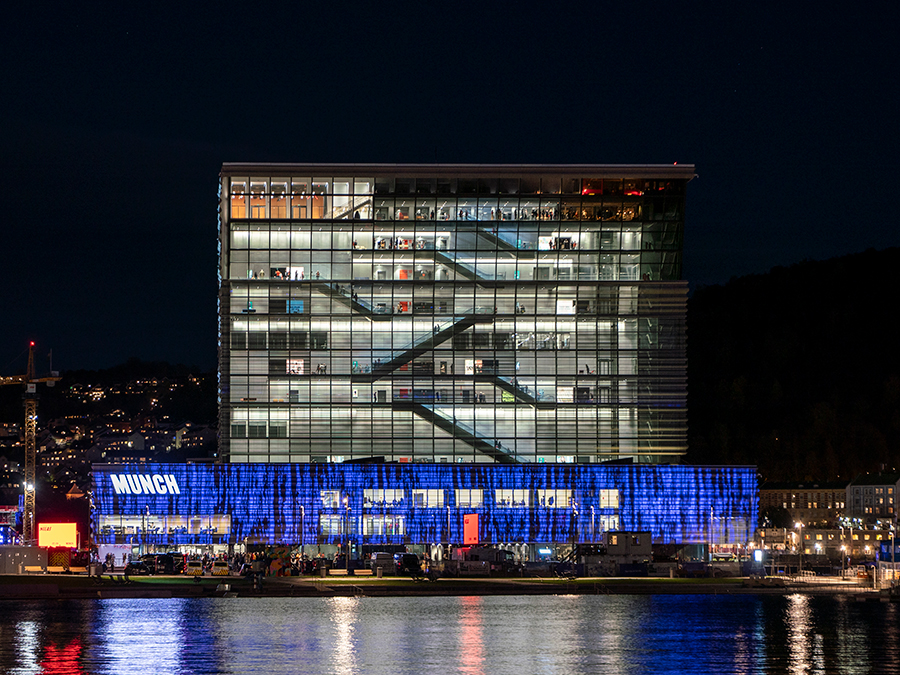
Snack 1.3, 4000K, 36W, 10°, customized version with black finish Go to the project and credits
Adapting the ambiance to the exhibition layout
We can view the ambient lighting and the accent lighting for the art works as two sides of the same coin. And their relationship can change from exhibition to exhibition in the course of creating the most suitable atmosphere for the occasion.
🔸 One possibility is the creation of a contrast between the accent lighting and the exhibition space, leaving the latter in semi-darkness in order to establish a perceptual hierarchy that enhances the individual works of art.
🔸 Another is to let the ambient light link the exhibits in a single discourse.
The Museo di Storia Naturale del Mediterraneo in Livorno, Italy, plays with the contrast between the darkness of the surroundings and the accent lighting. The latter emphasises the large cetacean skeletons on display with uplights installed in the floor, and frames the fish reproductions on the walls with a narrow 8° angle from the high beams. Both the uplights and the projectors generate shadows on the walls and ceiling that add considerably to the visual experience of the exhibition.
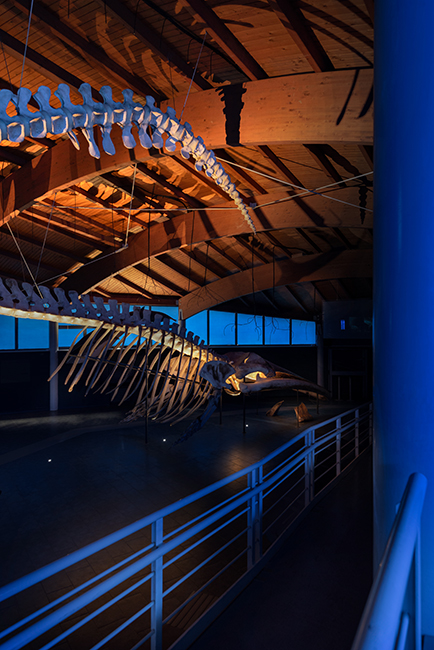
Bright 2.4, 4000K, 5W, 13°x52°, stainless steel Go to the project and credits
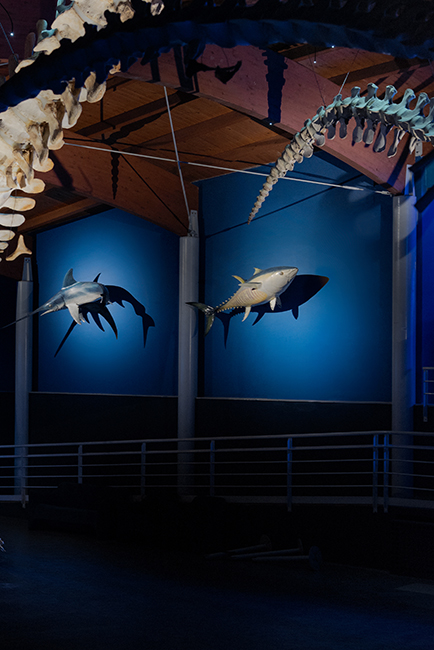
Pivot 1.7, 4000K, 7W, 8°, cor-ten Go to the project and credits
Recently, The Company Studios exhibition space in Milan chose the second option for the art exhibition When Time Dreams, letting fluorescent tubes on the ceiling provide flat, uniform ambient lighting to achieve a dreamlike atmosphere in which time and space cancel each other out.
There is detail lighting, too, however, provided by a few small fixtures. Some of these can clearly be seen in the photo below, attached to the metal frame to illuminate the minerals displayed on the shelf from above. Another is mounted on the lower half of the shelving and points at the photograph hanging on the wall, which is also lit from above by compact projectors. The fixtures add a few glints of light, some delicate shadows and a subtle three-dimensional effect that bring the space to life.
In this case, lighting’s two dimensions, ambient and accent lighting, are not at odds with each other. They do not generate the visual interruption that gives weight to the individual work, and rhythm to the exhibition. Light becomes the bearer of a single coherent message that is articulated throughout the exhibition.
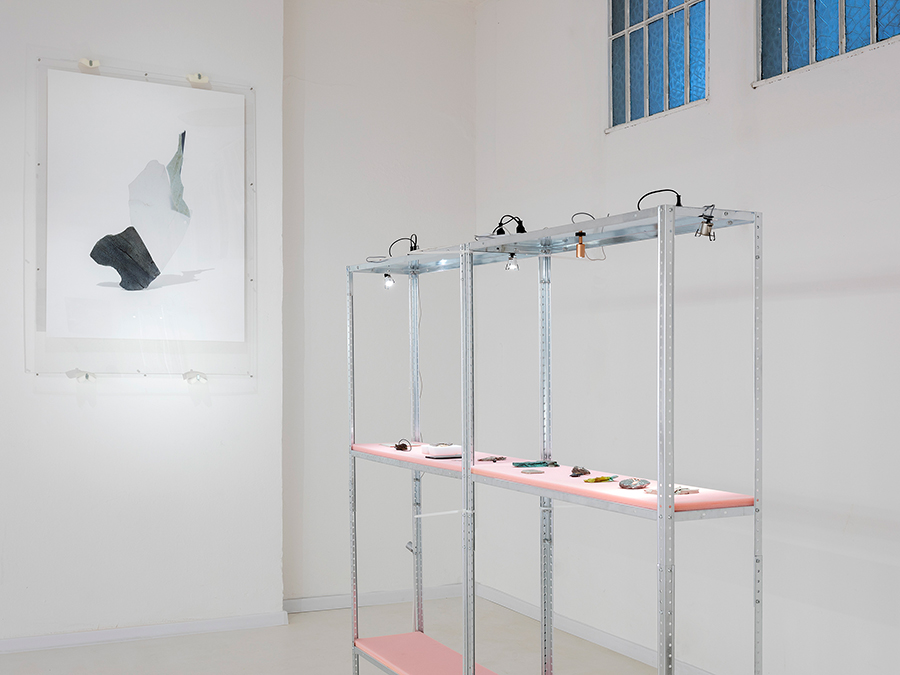
Eyes 2.R, 3000K, 2.5W, 36°, white / Eyes 2.U, 3000K, 3W, 36°, white / satin / Gem 2.1, 3000K, 4.5W, 42°, pearl chrome / Krill 2.4, 3000K, 2.5W, optical range 9°—70°, rose gold, with magnetic plates / Krill 3.4, 3000K, 4.5W, optical range 18°—80°, black Go to the project and credits
The lighting in the exhibition space, in its dual discourse of ambience and detail, can be modulated by dimming the lights and activating programmed lighting scenes. Museum guides can activate these scenes as they lead visitors around the exhibition, creating an immersive experience.
Such is the case in the Hypogeum of Santa Maria in Stelle, which we told you about here: a journey of discovery in which ancient inscriptions, frescoes and symbols are illuminated, and thus revealed, in stages.
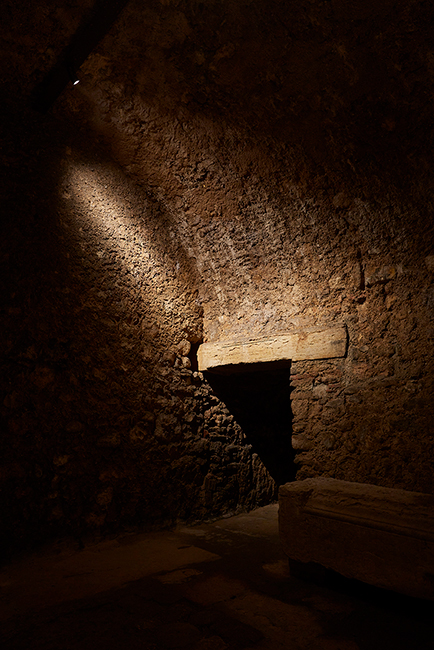
Ginko 2.0, 3000K, 7W, 13°x52°, cor-ten Go to the project and credits
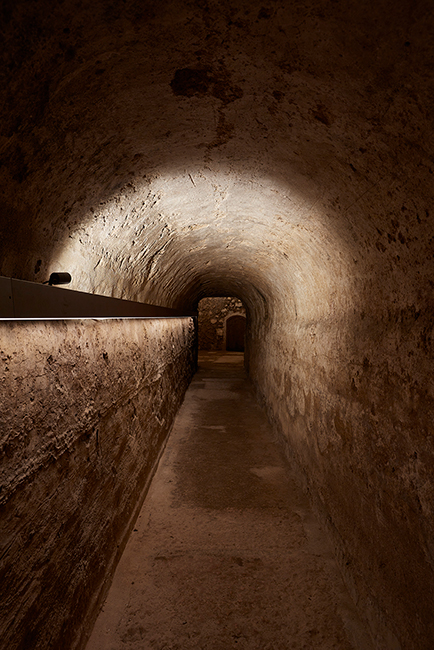
Ginko 1.0, 3000K, 3,5W, 36°, cor-ten Go to the project and credits
Creating different scenes focuses the viewer’s attention on one detail at a time: in this way, the relationship with the visitor becomes more dynamic and interactive.
📱 💡 📱
Control L&L fixtures and manage scenes at a touch with the Casambi app
The colour of light is the message
Lucearchitettura’s lighting design for the Hypogeum in Verona presents us with the opportunity to talk about the colour of light as a variable that can be used to strengthen the enveloping experience of the artistic offering.
The colour blue was used to reference the presence of water inside the Hypogeum, which was built as an aqueduct in Roman times and has undergone various changes of use over the intervening centuries. The effect is very atmospheric: the visual stimulus of the blue light recalls the (actual!) gurgling of the water flowing in the distance.
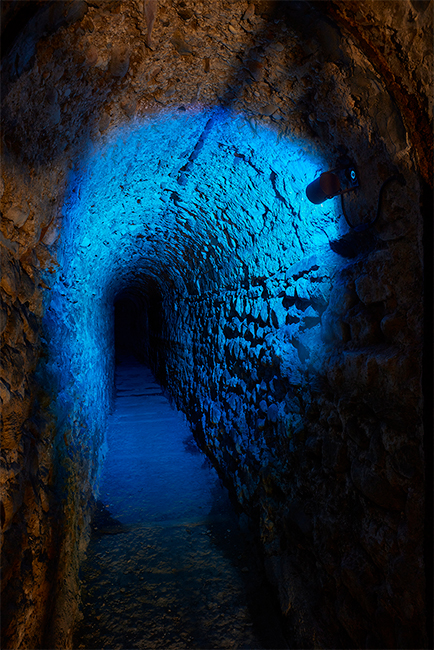
From an aqueduct to the sea. The Galata Maritime Museum in Genoa helps its visitors relive the excitement of being on board a lifeboat in a stormy sea.
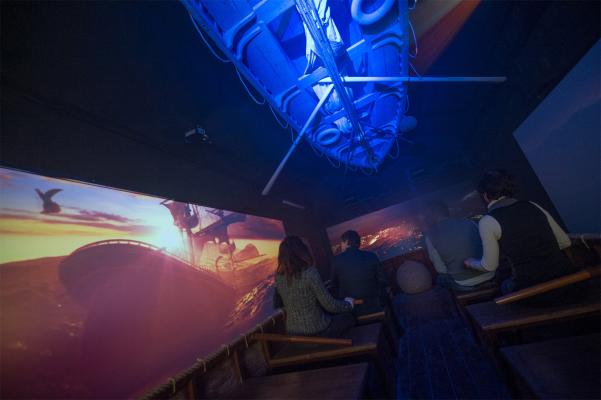
Pivot 1.7, 3000K - blue, 5W, 11°, 34°, anodized grey / Simply 1.0, blue, 1W, pearl chrome Go to the project and credits 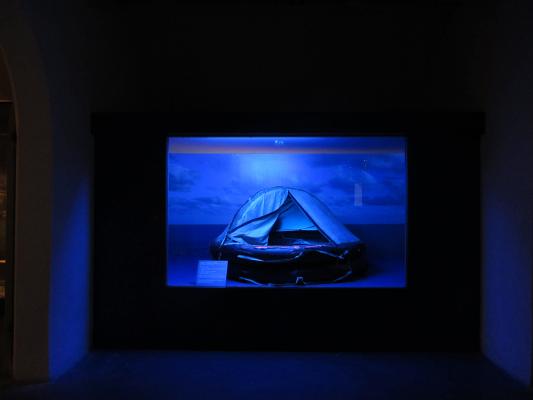
Simply 1.0, blue, 1W, pearl chrome Go to the project and credits
A mix of different colour temperatures can also create a better visitor experience.
In the first image below, the temporary installation Il Sospeso, by Emanuele Giannelli, inside the bell tower of the main church, or Duomo, of Pietrasanta in Tuscany, uses a very warm 2700K light, to light the spiral staircase and a cool 4000K one, to highlight the suspended sculpture.
Different colour temperatures used simultaneously can enhance both warm and cold tones in the same work. The lighting designers of Lucearchitettura gave us yet another masterly demonstration of this skill. They chose CCTs 3000K and 4000K to bring out the best of the frescoes in the Hypogeum of Santa Maria in Stelle.
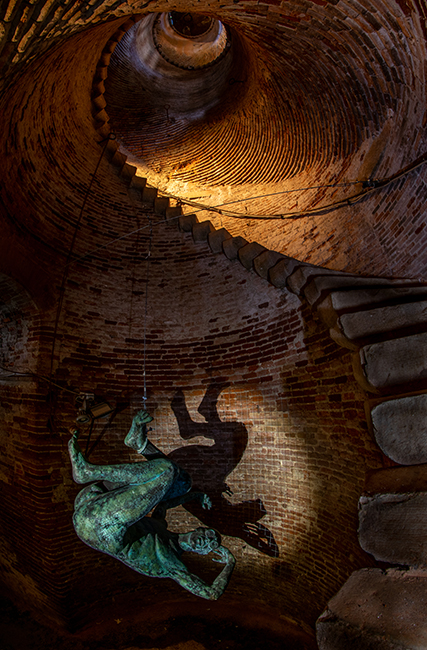
Ginko 3.4, 4000K, 15W, 8°—38°, anthracite / Ginko 3.0, 2700K, 15W, 42°, anthracite / Ginko 4.0, 2700K, 25W, 26°, anthracite Go to the project and credits
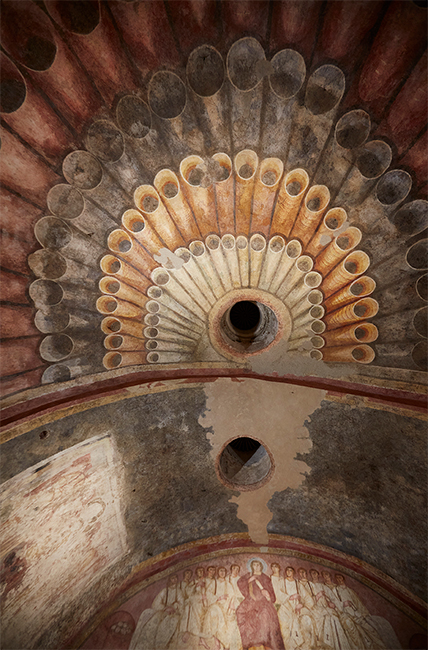
Ginko, 3000K-4000K, 11°-17°-34°-45°-68°, cor-ten, standard snoot, pedestals designed by Lucearchitettura Go to the project and credits
Fidelity first
Lighting fixtures created for the art world need to have a high colour rendering ability to faithfully render the colours of the object lit. This is expressed in different ways depending on the measurement method used.
🔸 The familiar CRI (Colour Rendering Index) consists of a value ranging from 0 to 100 obtained from the average of 8 sample colours. If the CRI value of the LED source is greater than 90, it lies within the range of high colour rendering.
🔸 An alternative method to the CRI, and a more recent one, is the TM-30, which considers 99 sample colours, instead of 8, and is expressed by a pair of values:
- Colour Fidelity (Rf): from 0 to 100, like the CRI, where a value above 90 defines high colour rendition;
- Colour Gamut (Rg): an index related to saturation, which can be higher or lower than 100 depending on the value of the Rf An optimal Rg value should be around 100.
Additionally, if the exhibited works have a red dominant, we look at the value of the R9 CRI index (R9>98) to ensure that this colour is rendered in all its vividness.
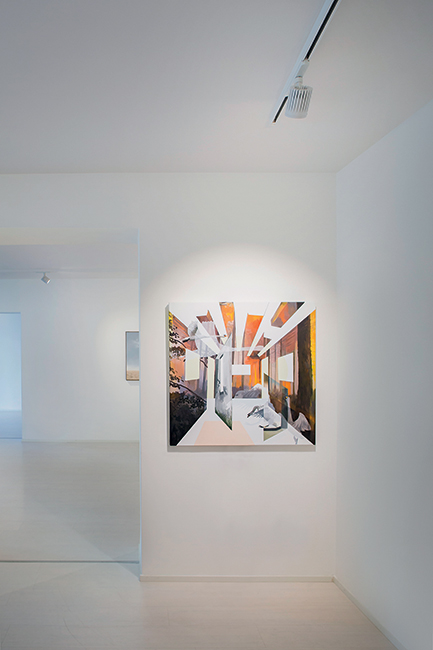
Zab Track 2.0, 3000K, 23W, white, APART spaziocritico, Vicenza, Italy, courtesy of Sharon Di Carlo Find out more about Zab Track
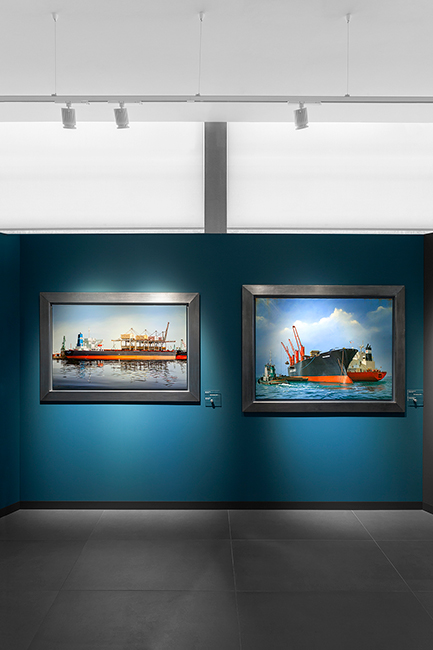
Zab Track 2.0, customized version with 3500K LED colour, 23W, white Go to the project and credits
Yes to Stendhal syndrome, no to glare
When thinking about museum lighting it is also important to consider the factors that can affect visitors’ visual comfort.
Firstly, it is important to position the lighting fixtures so as to avoid reflections from the artwork. Secondly, there are two components of the lamp itself that have been specifically created to prevent glare: recessed optics and accessories such as honeycomb louvres, snoots and barn doors.
In the Lady Chapel of the church of Saint-Sulpice, in Paris, the 18-century paintings on the walls are lit by four projectors with customized snoots. Visitors enjoying the works can also look up to admire the ceiling without being dazzled by the light sources.
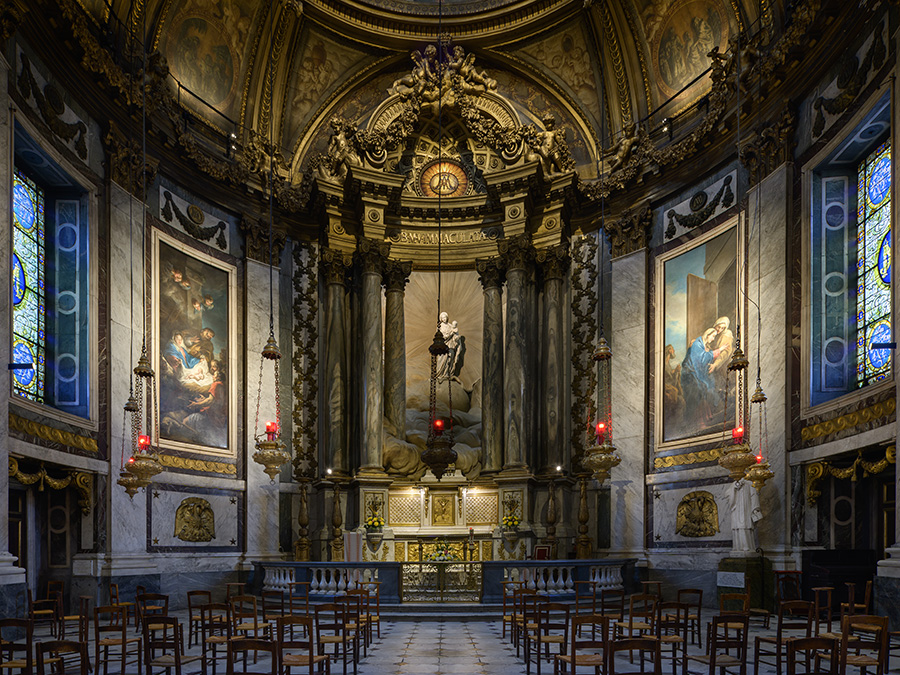
Zab Track 1.1, 3000K, 29W, 14°, black, with customized snoot Go to the project and credits
We have outlined the main points for creating museum lighting that delivers an enthralling visitor experience. Next time, we’ll continue to talk about lighting for art works by examining the lighting options for showcases and display cabinets.
How have you used light to enhance the experience of an art exhibition?

